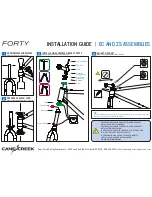
BMX: 35-50 PSI
MTB: 46-65 PSI
Road Touring: 70-90 PSI (Recommended)
Road Racing: 110-125 PSI
Hybrid/Cross: 60-100 PSI
How To Fix a Flat Tire
If you need to repair a tire, follow these steps:
1.Remove the wheel from the bicycle.
2.Deflate the tire completely through the valve. Loosen the tire bead by pushing it inward.
3.Press one side of the tire bead up over the edge of the rim.
Note:
Use tire levers. Using a screwdriver may damage the rim.
4.Remove the tube, leaving the tire on the rim.
5.Patch the leaks using a tube repair kit, or replace the tube.
Note:
Make sure that the size of the replacement tube matches the size stated on the tire
sidewall and that the valve is the correct type for your bicycle.
6.Match the position of the leak in the tube with the tire to locate the possible cause and
mark the location on the tire.
7.Remove the tire completely and inspect it for nails, glass, etc. The inside of the rim should
also be inspected to make sure there are no protruding spokes, rust or other potential
causes. Replace the rim tape, which covers the spoke ends, if damaged.
8.Remount one side of the tire onto the rim.
9.Using a hand pump, inflate the tube just enough to give it some shape.
10.Place the valve stem through the hole in the rim and work the tube into the tire. Note: Do
not let the tube twist.
11.Using your hands only, remount the other side of the tire by pushing the edge toward the
center of the rim. Start on either side of the valve and work around the rim.
12.Before the tire is completely mounted, push the valve up into the rim so that the tire sits
squarely in position.
13.Fit the rest of the tire, rolling the last, most difficult, part on with your thumbs. Note: Avoid
using tire levers as these can puncture the tube or damage the tire.
14.Check that the tube is not caught between the rim and the tire bead at ay point.
15.Using a hand pump, inflate the tube until the tire begins to take shape. Check that the tire
bead is evenly seated all the way around the rim. When properly seated, fully inflate the tire
to the pressure marked on the sidewall. Use a tire gauge to check.
16.Place the wheel into the frame checking that all gears, brakes and quick release levers
are properly adjusted.
Handlebar Stem
The handlebar stem fits into the steering column. It is held firm
by the action of a binder bolt and expander wedge which, when
tightened, binds with the inside of the fork steerer tube.
When removing the stem, loosen the stem bolt two or three
turns, and then tap it to loosen the wedge inside.
To lubricate, first wipe off any grease and grime. Next, apply a
thin film of grease to the part, including the wedge that will be
inserted into the frame. The height of the handlebar can be
adjusted for comfort. The stem is marked with the words max.
height/minimum insertion.
WARNING:
Never ride a bicycle if the stem has been raised so that the max.
height/minimum insertion line can be seen.
WARNING:
Over tightening the stem bolt or headset assembly may cause damage to
the bicycle and/or injury to the rider.
When re-fitting the stem, make sure the handlebar is correctly aligned and tightened using
the appropriate hex wrench.
7 OF 13
Summary of Contents for 132140
Page 1: ......

































